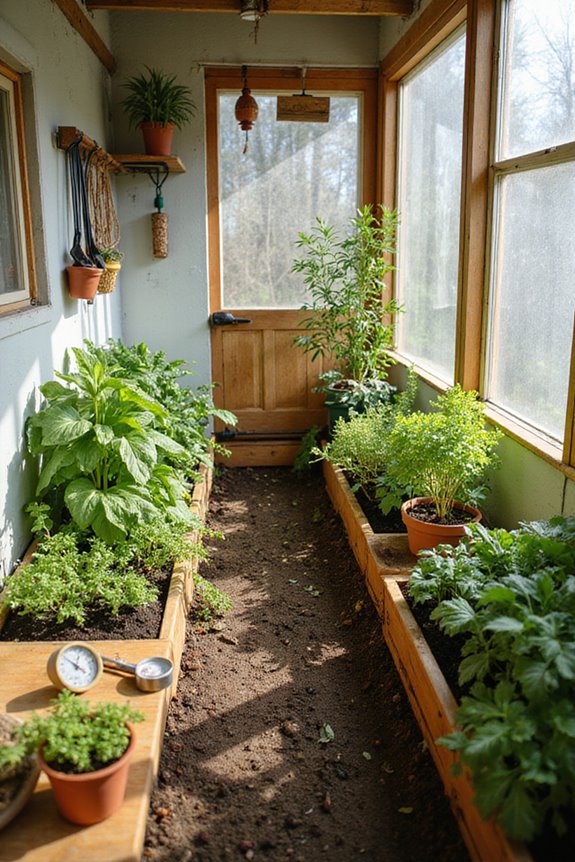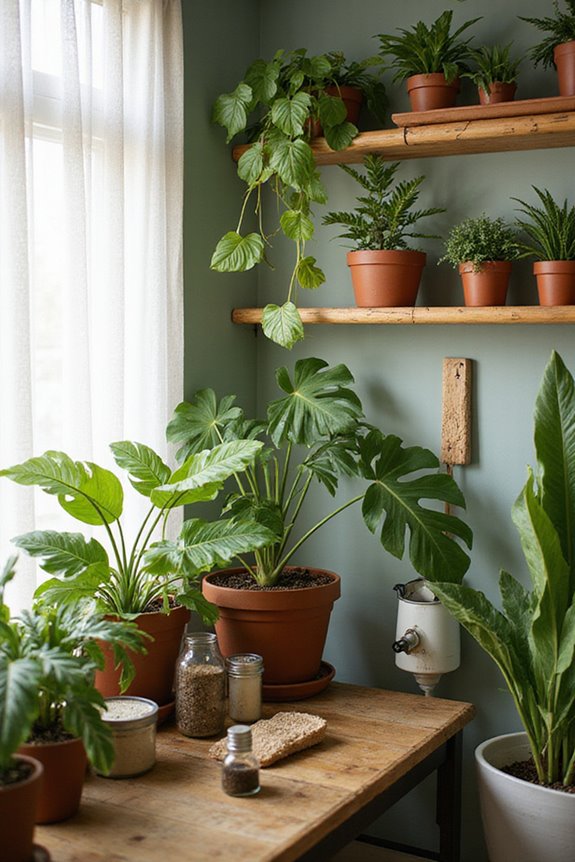To create ideal growing environments, we should focus on key factors. First, we need sufficient light tailored to our plants’ needs, with full-spectrum options preferred. Next, managing temperature is essential; most plants thrive between 15°C to 30°C. We must also monitor soil moisture and utilize effective watering strategies. Balancing nutrients through regular soil testing and air quality control further supports growth. By paying attention to these elements, we can foster healthier plants and enhance our success. There’s much more to explore on this topic.
Key Takeaways
- Provide appropriate light intensity and spectrum tailored to plant needs, ensuring full-spectrum lighting for all growth stages.
- Maintain temperatures between 15°C to 30°C, considering specific plant preferences for cool or warm conditions.
- Implement efficient watering strategies, monitoring soil moisture and utilizing drip irrigation to deliver water directly to roots.
- Regularly test soil for NPK levels and adjust fertilization with organic amendments to support nutrient cycling and plant health.
- Ensure good air quality through ventilation and filtration, maintaining optimal CO2 levels for robust plant growth.
Understanding Light Requirements
When we think about creating ideal growing environments, understanding light requirements is vital for healthy plant growth. Light intensity plays a pivotal role in how our plants thrive. For example, low light (50-150 µmol m⁻²s⁻¹) suits shade-tolerant plants, while high light (250-450 µmol m⁻²s⁻¹) benefits sun-loving species.
We also need to take into account the light spectrum. Plants use photosynthetically active radiation (PAR) between 400-700 nm for optimal growth. Full-spectrum lighting mimics natural sunlight, supporting all growth stages.
To guarantee success, we should match our plants to their light needs, adjusting placement or duration as necessary. Remember, providing the right light intensity and spectrum can greatly enhance our plants’ growth and flowering.
Managing Temperature for Growth
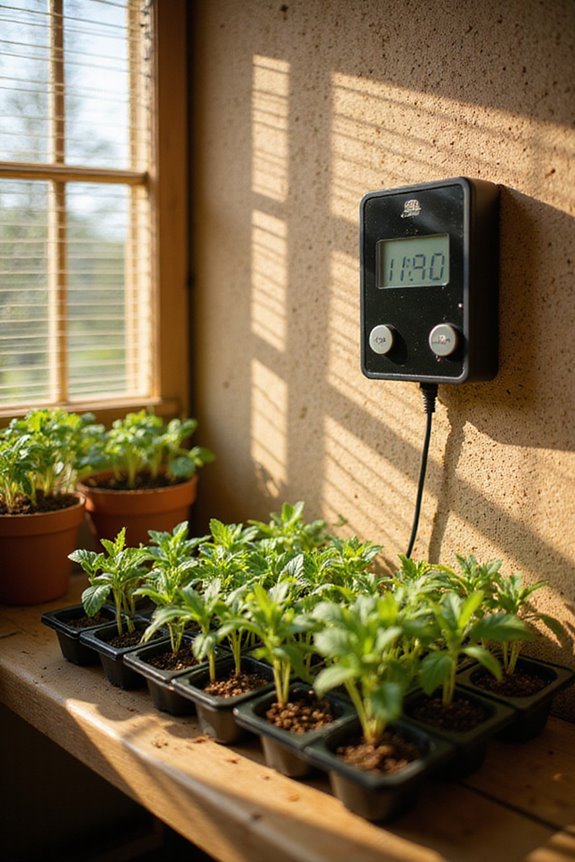
Managing temperature is crucial for plant growth, as it directly impacts essential processes like photosynthesis and respiration. Most plants thrive between 15°C and 30°C. Understanding temperature fluctuations helps us create ideal conditions for our crops.
- Temperature Ranges:
- Cool-season crops, like spinach, prefer below 65°F.
- Warm-season crops, like tomatoes, thrive above 65°F.
- Temperature affects germination, flowering, and fruit development.
- Plants can adapt based on their origins, so knowing your crop’s needs is fundamental.
Watering Strategies for Optimal Hydration
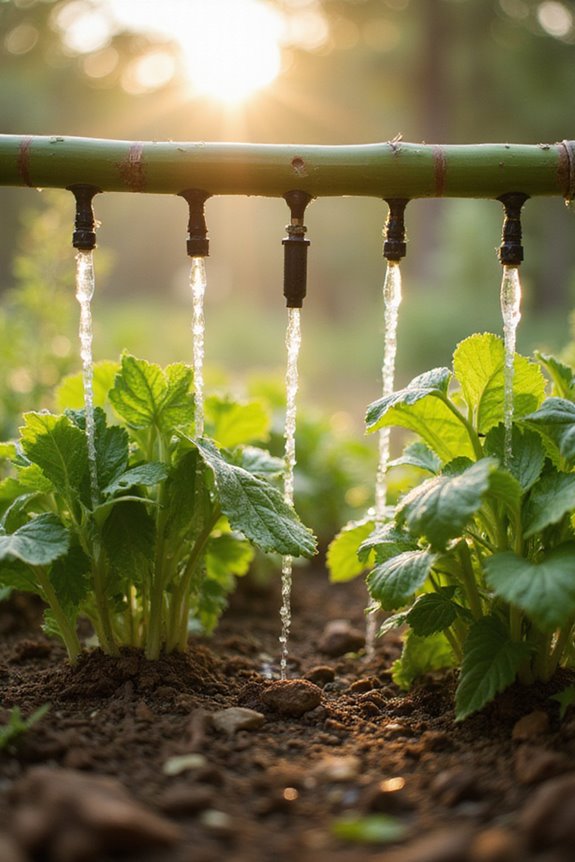
To guarantee our plants receive ideal hydration, we need to adopt effective watering strategies. First, monitoring soil moisture is key. We should check 2-4 inches below the surface to confirm it’s moist but not waterlogged. Next, using drip irrigation or soaker hoses helps deliver water efficiently to the roots, minimizing waste.
- Watering frequency varies by plant type:
- High water-use plants need deeper watering.
- Drought-tolerant plants can go weeks between waterings.
Balancing Nutrient Levels
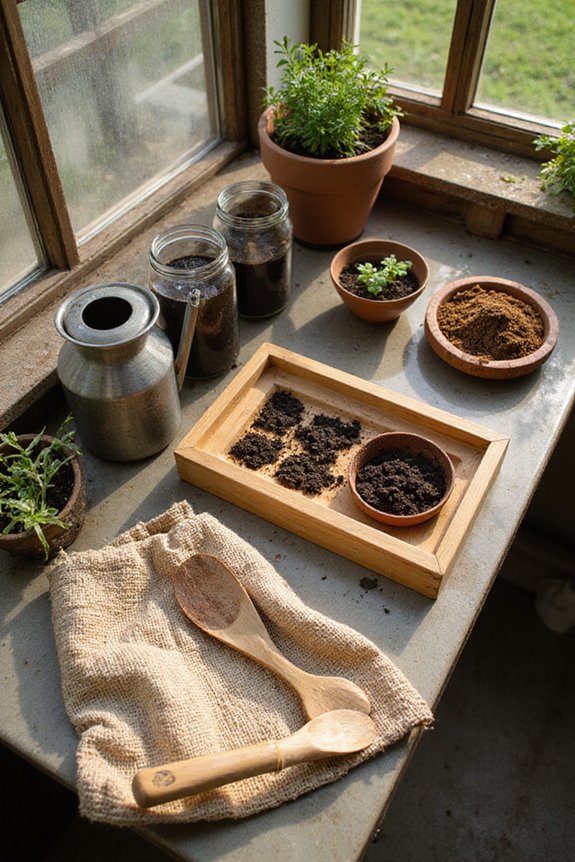
Maintaining proper nutrient levels in our soil is just as important as ensuring our plants are adequately hydrated. To achieve this, we should regularly test our soil to monitor NPK levels—nitrogen, phosphorus, and potassium. These primary macronutrients directly affect plant health and yield.
We can enhance nutrient cycling through organic amendments like compost or manure. These not only provide essential nutrients but also improve soil structure. Remember, calcium, magnesium, and sulfur are also crucial for structural integrity, so we shouldn’t overlook secondary macronutrients.
As our plants grow, their nutrient needs change, so we’ll need to adjust our fertilization strategies accordingly. By keeping a close eye on nutrient levels, we can support strong, healthy plants throughout their life cycles.
Ensuring Air Quality and CO2 Availability
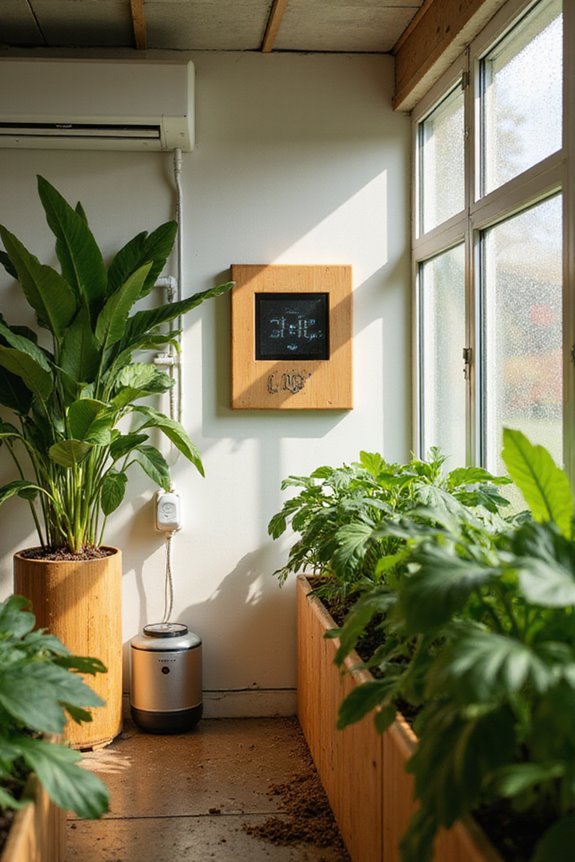
Maintaining a healthy air quality and adequate carbon dioxide (CO2) availability is essential for ideal plant growth. To achieve this, we should focus on effective air filtration systems. These systems help remove indoor pollutants, like ozone and nitrogen dioxide, which can harm our plants. Additionally, we must identify and reduce pollutant sources in our growing environments.
Here are some steps to follow:
- Monitor Air Quality: Use sensors to track indoor pollutant levels.
- Improve Ventilation: Facilitate fresh air exchange to prevent CO2 depletion.
- Balance CO2 Levels: Aim for optimal concentrations between 1000-1500 ppm without compromising oxygen.
Optimizing Soil Conditions
Creating the right soil conditions plays a significant role in promoting healthy plant growth. To start, we should conduct regular soil testing. This helps us understand pH levels and nutrient availability. Most plants thrive in soil with a pH between 6.0 and 7.5.
Next, we can adjust pH by applying lime or sulfur as needed. We also need to take into account soil texture; loamy soil is ideal for retaining moisture and nutrients.
Adding organic matter, like compost, improves soil structure and enhances microbial activity. Additionally, using cover crops protects against erosion and enriches the soil.
Monitoring Humidity Levels
How can we effectively monitor humidity levels to support our plants’ growth? To guarantee our plants thrive, we should use humidity sensors for accurate readings. These devices provide real-time data, helping us maintain ideal humidity levels throughout different growth stages.
- During the seedling stage, we aim for 75-85% humidity.
- In the vegetative phase, we lower it to 50-70%.
- For flowering, we target 40-50% to prevent fungal diseases.
Utilizing Technology for Growth Management
Utilizing technology in agriculture can greatly enhance how we manage plant growth and resources. By integrating automated irrigation systems, we can monitor soil moisture levels in real-time, ensuring crops receive just the right amount of water. This not only conserves water but also maximizes growth potential.
Moreover, data analytics helps us make informed decisions. We can analyze past crop performance and weather patterns to refine our strategies. Tools like drones and satellite imagery provide insights into crop health and nutrient needs, allowing us to address issues promptly. Incorporating indoor gardening tools into our growing systems can further optimize plant care and maintenance.
Incorporating these technologies into our farming practices fosters a community of innovation. Together, we can create ideal growing environments, ensuring sustainability and improved yields for all.
Frequently Asked Questions
What Common Pests Threaten Optimal Growing Environments?
We’re battling a swarm of pests threatening our precious plants! Cotton aphids and diamondback moths wreak havoc, but we can unite through pest control and organic solutions, protecting our gardens and ensuring thriving, vibrant growth together!
How Can I Improve Pollination in My Plants?
To improve pollination in our plants, we can explore various pollination techniques and enhance flower diversity. Together, let’s embrace hands-on methods and consider bees to boost our garden’s productivity and beauty.
What Are the Signs of Nutrient Deficiency in Plants?
We’ve all seen nutrient symptoms in plants, right? From yellowing leaves to stunted growth, these deficiency types can really impact our garden. Let’s keep an eye out and guarantee our plants thrive together!
How Does Plant Spacing Affect Growth?
When we consider how plant spacing affects growth, we find that increased plant density can lead to root competition and reduced light availability, while wider spacing enhances air circulation, ultimately fostering healthier plants together.
What Role Do Beneficial Insects Play in Plant Health?
Think of beneficial insects as nature’s tiny guardians. They play an essential role in pest control, protecting our plants and ensuring vibrant growth. Together, we can cultivate a thriving garden ecosystem with their invaluable help.

